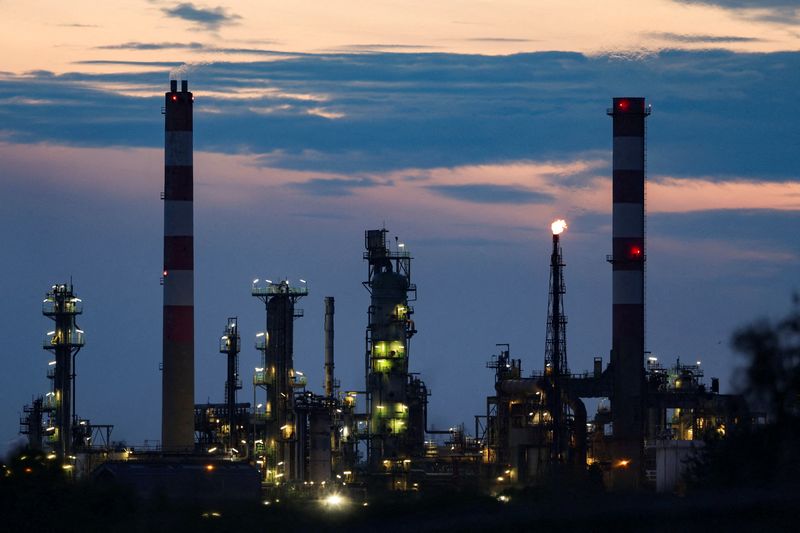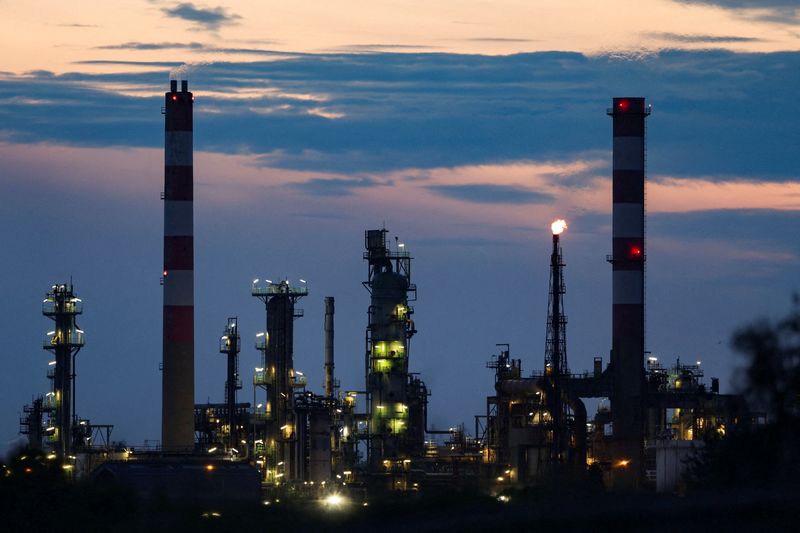Commodities
Oil dips, but posts weekly gain on solid 2024 demand outlook

By Nicole Jao
NEW YORK (Reuters) -Oil futures prices settled slightly lower on Friday after a survey showed deteriorating U.S. consumer sentiment, but prices rose 4% for the week as investors weighed forecasts for solid demand for crude oil and fuel in 2024.
futures settled down 13 cents at $82.62 a barrel, while West Texas Intermediate (WTI) futures were down 17 cents at $78.54.
Brent and the U.S. benchmark gained nearly 4% over the week, highest weekly rise in percentage terms since April.
Both benchmarks slipped after a survey showed U.S. consumer sentiment weakened in June to a seven-month low.
“The data came in way lower than expected,” said Bob Yawger, director of energy futures at Mizuho. “That implies the average consumers don’t have confidence the economic situation is improving.”
Losses were limited by forecasts for strong demand.
The U.S. Energy Information Administration (EIA) upgraded its oil demand growth estimate for 2024 slightly, and the Organization of the Petroleum Exporting Countries (OPEC) stuck to a forecast for relatively strong growth of 2.2 million barrels a day (bpd).
The International Energy Agency (IEA) meanwhile cut its demand growth forecast to under 1 million bpd.
However, all three forecasters predicted a supply deficit at least until the beginning of winter, Commerzbank (ETR:) analysts highlighted.
Also this week, the U.S. Federal Reserve kept interest rates on hold, and investors believe rate cuts are unlikely before December.
“In view of the still uncertain economic outlook for the major economic regions, a further price increase is not to be expected for the time being,” said Commerzbank analyst Barbara Lambrecht.
The U.S. active oil rig count, an early indicator of future output, fell by four to 488 this week to its lowest since January 2022, energy services firm Baker Hughes said.
Elsewhere, Russia pledged to meet its output obligations under the OPEC+ pact after saying it exceeded its quota in May.
Prices dipped last week after OPEC and its allies said they would phase out output cuts starting from October.
“No matter how many times it promises to make up for poor compliance at a future date, the market just sees more oil and an agreement that might just possibly unravel,” said PVM analyst John Evans.

Market focus is also on Gaza ceasefire talks, which could alleviate concerns about potential disruption to oil supply from the region.
Money managers raised their net long U.S. crude futures and options positions in the week to June 11, the U.S. Commodity Futures Trading Commission (CFTC) said on Friday.
Commodities
Oil prices rise; U.S. crude inventories plunge, Russia-Ukraine truce eyed
Commodities
India’s Reliance to stop buying Venezuelan oil over US tariffs, sources say
Commodities
Oil prices climb on Venezuela supply worries

 Forex3 years ago
Forex3 years agoForex Today: the dollar is gaining strength amid gloomy sentiment at the start of the Fed’s week

 Forex3 years ago
Forex3 years agoUnbiased review of Pocket Option broker

 Forex3 years ago
Forex3 years agoDollar to pound sterling exchange rate today: Pound plummeted to its lowest since 1985

 Forex3 years ago
Forex3 years agoHow is the Australian dollar doing today?

 Cryptocurrency3 years ago
Cryptocurrency3 years agoWhat happened in the crypto market – current events today

 World3 years ago
World3 years agoWhy are modern video games an art form?

 Commodities3 years ago
Commodities3 years agoCopper continues to fall in price on expectations of lower demand in China

 Economy3 years ago
Economy3 years agoCrude oil tankers double in price due to EU anti-Russian sanctions























